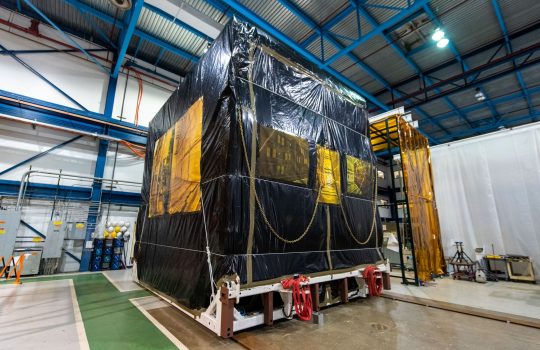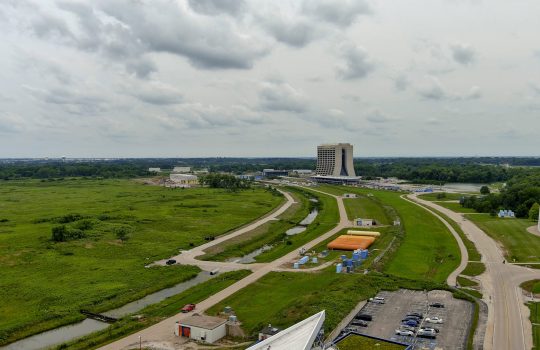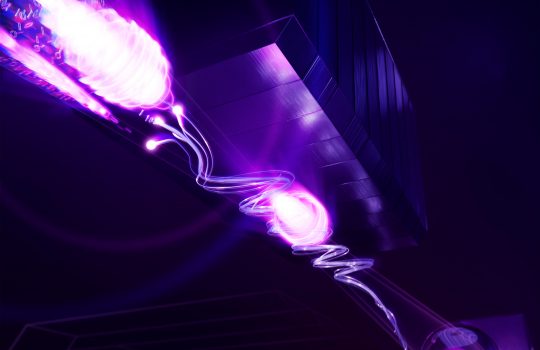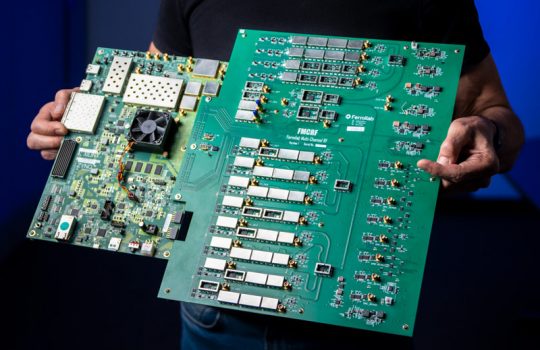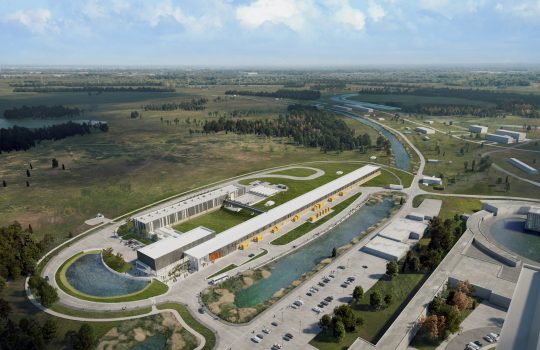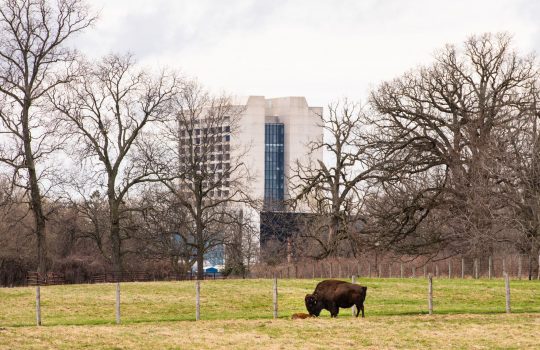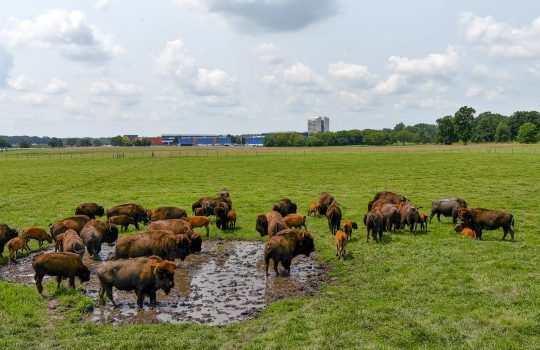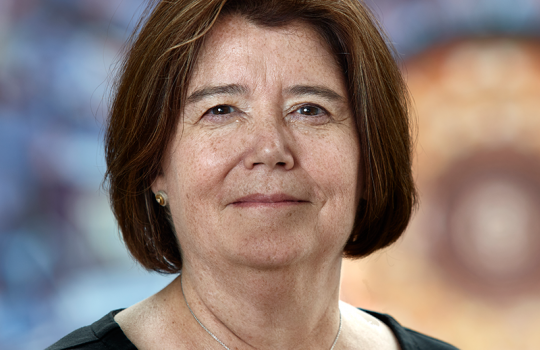Neutrino detector on the move
A new 20,000-pound particle detection system built for a neutrino experiment will be transported 3 miles across the Fermilab campus today. About the size of a small house, it will be the heart of the Short-Baseline Near Detector at Fermilab.

